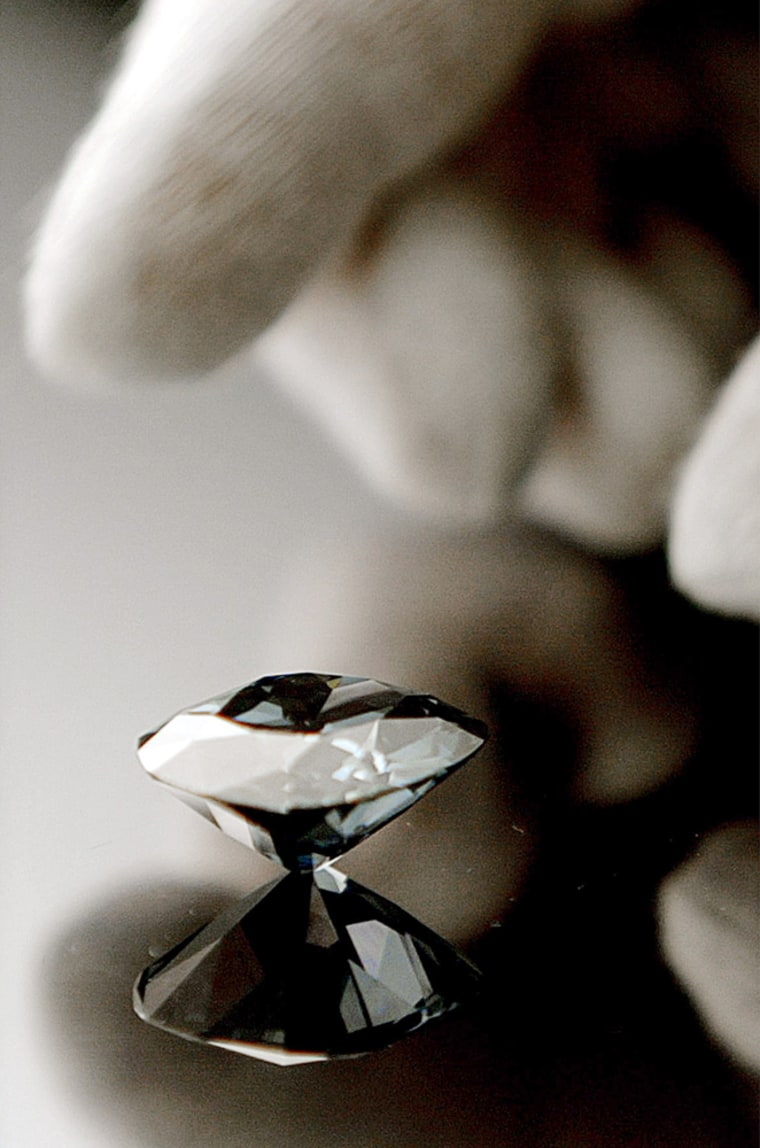Researchers using computer analysis have traced the origin of the famed Hope Diamond, concluding that it was cut from a larger stone that was once part of the crown jewels of France.
A French connection had been suspected for the Hope, but the new study shows just how it would have fit inside the larger French Blue Diamond and how that gem was cut, Smithsonian gem curator Jeffrey Post explained.
The deep blue Hope Diamond is the centerpiece of the gem collection at the Smithsonian's National Museum of Natural History, famed for its claimed history of bad luck for its owners. It's been good fortune for the museum, though, drawing millions of visitors.
Post said the new analysis of the diamond took a year, with researchers using sketches from pre-Revolutionary France, scientific studies of the French crown jewels and computer models.
"This new Hope Diamond research would not have been possible 10 years ago," said Post. "What is exciting is that we are constantly learning new information about our collections as we apply new high-tech research methods. Even the Hope Diamond is grudgingly giving up some of its secrets."
The research helps confirm the Hope Diamond as originating with a 115-carat stone found in India in 1668. That stone was sold to King Louis XIV of France who had it cut into the 69-carat French Blue. The French Blue was stolen during the French Revolution.
Just over twenty years later, after the statute of limitations expired, a large blue diamond was quietly put up for sale in London, and eventually Henry Philip Hope purchased it.
Finally donated to the Smithsonian by jeweler Harry Winston, the now 45.52 carat stone is the world's largest blue diamond.
Detailed analysis
The team of researchers led by Post and Steven Attaway, engineer and gem cutter; as well as Scott Sucher and Nancy Attaway, gem cutting experts, compiled the new analysis.
While the French Blue no longer exists, Post said the sketches of it from France were quite detailed and allowed preparation of a computer model of that stone. In 1700, French scientists had also studied several stones from the royal collection, determining their specific gravity and other details.
Their analysis of other stones that still exist was quite accurate, Post said in a telephone interview, so the researchers felt the data on the French Blue was also probably accurate.
After using the sketches and analysis to make the computer model of the French Blue, and at the same time measuring the Hope Diamond and entering that data into the computer, the researchers "virtually placed the Hope back inside the French Blue" Post said.
"It turns out it actually fits perfectly in only one way, but at that orientation, when you saw how it fit, you could see why it was cut the way it is," Post said.
"They cut he corners off the French Blue, changed slightly the angle of the bottom facets, and that produced the Hope Diamond," he said. Indeed, some of the facets of the current diamond may even be left over from the French Blue.
